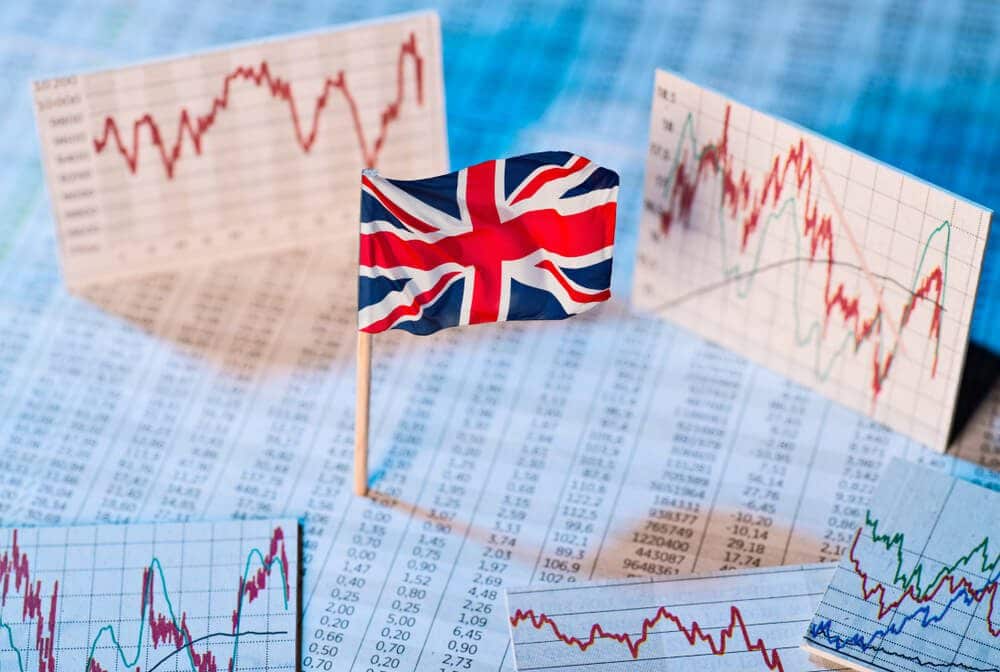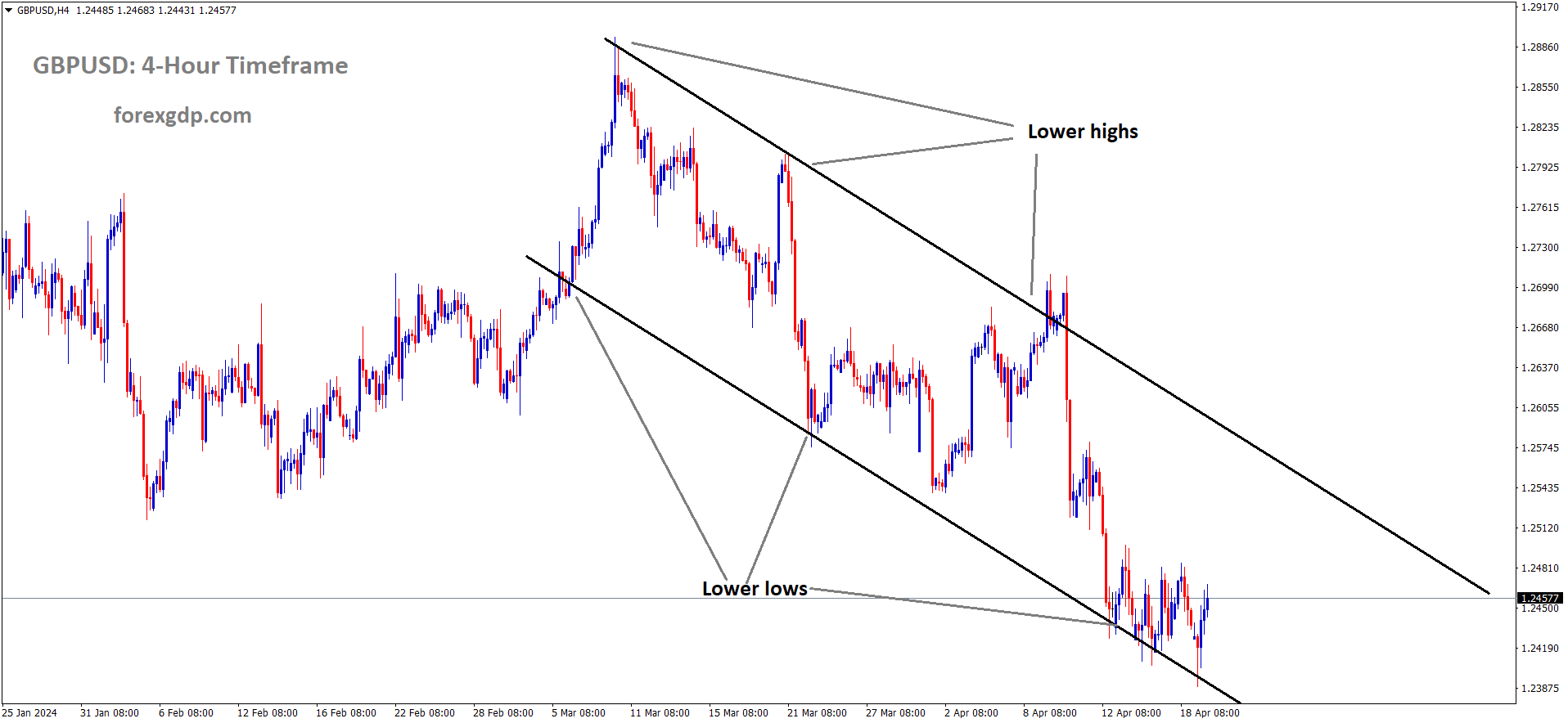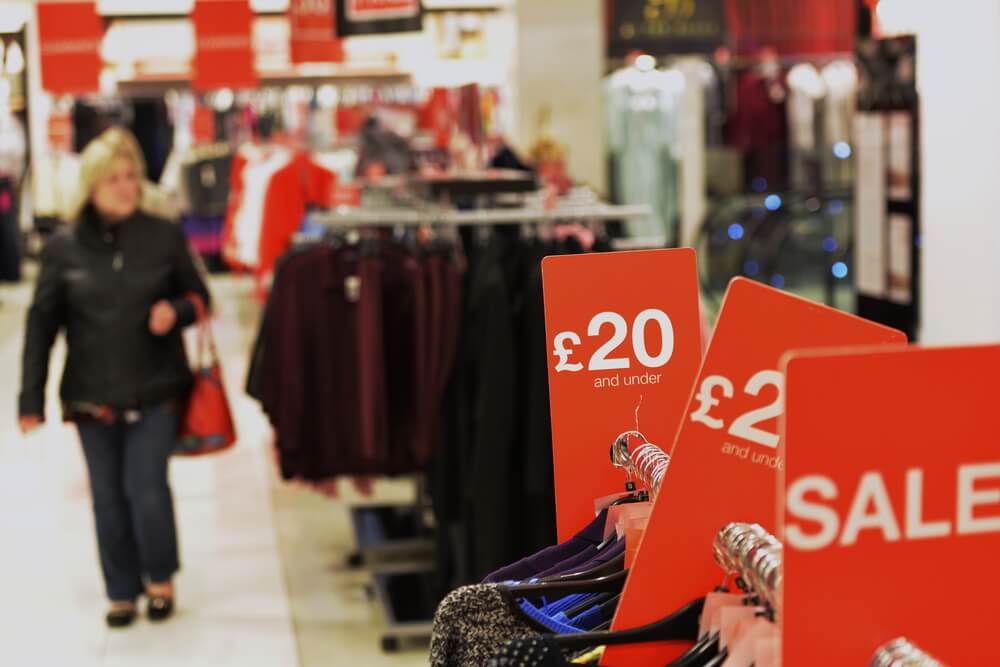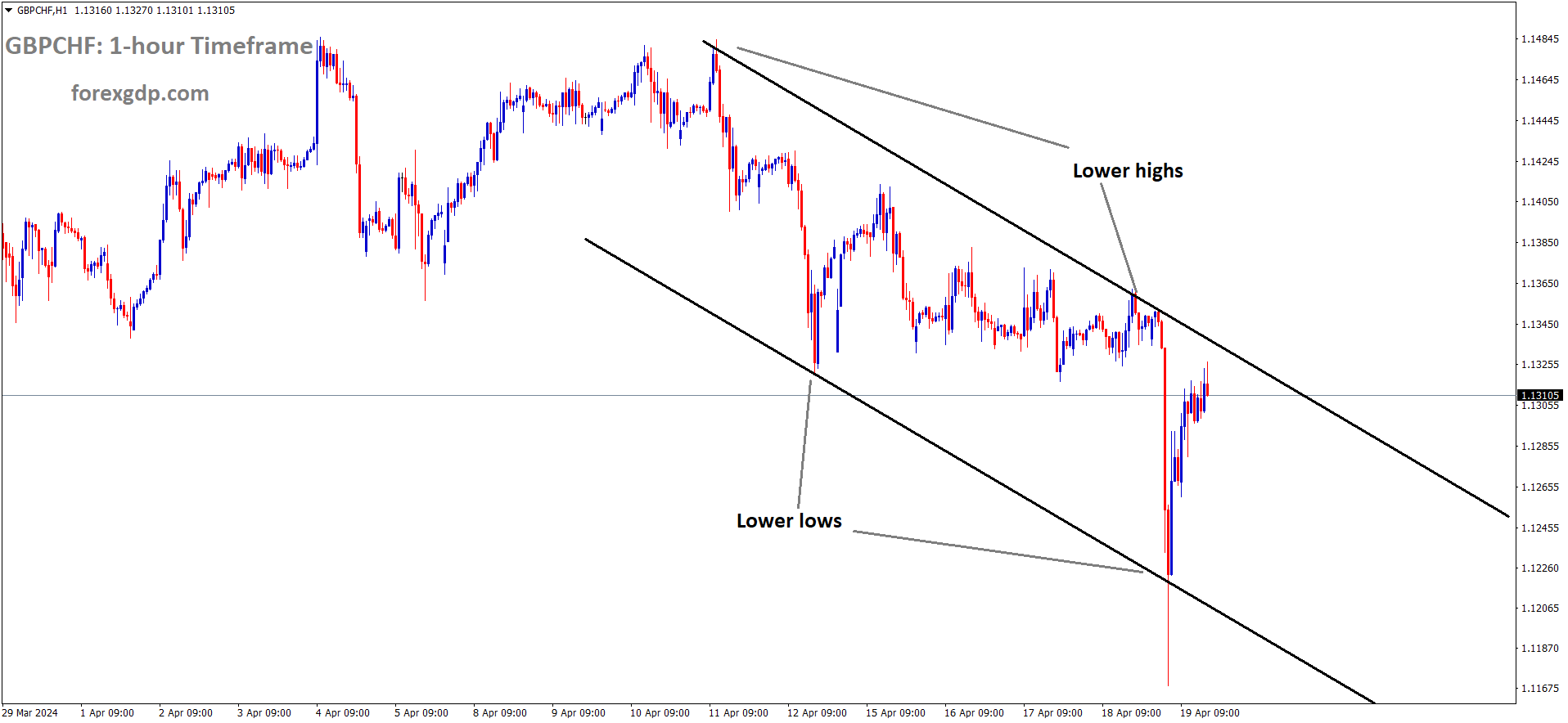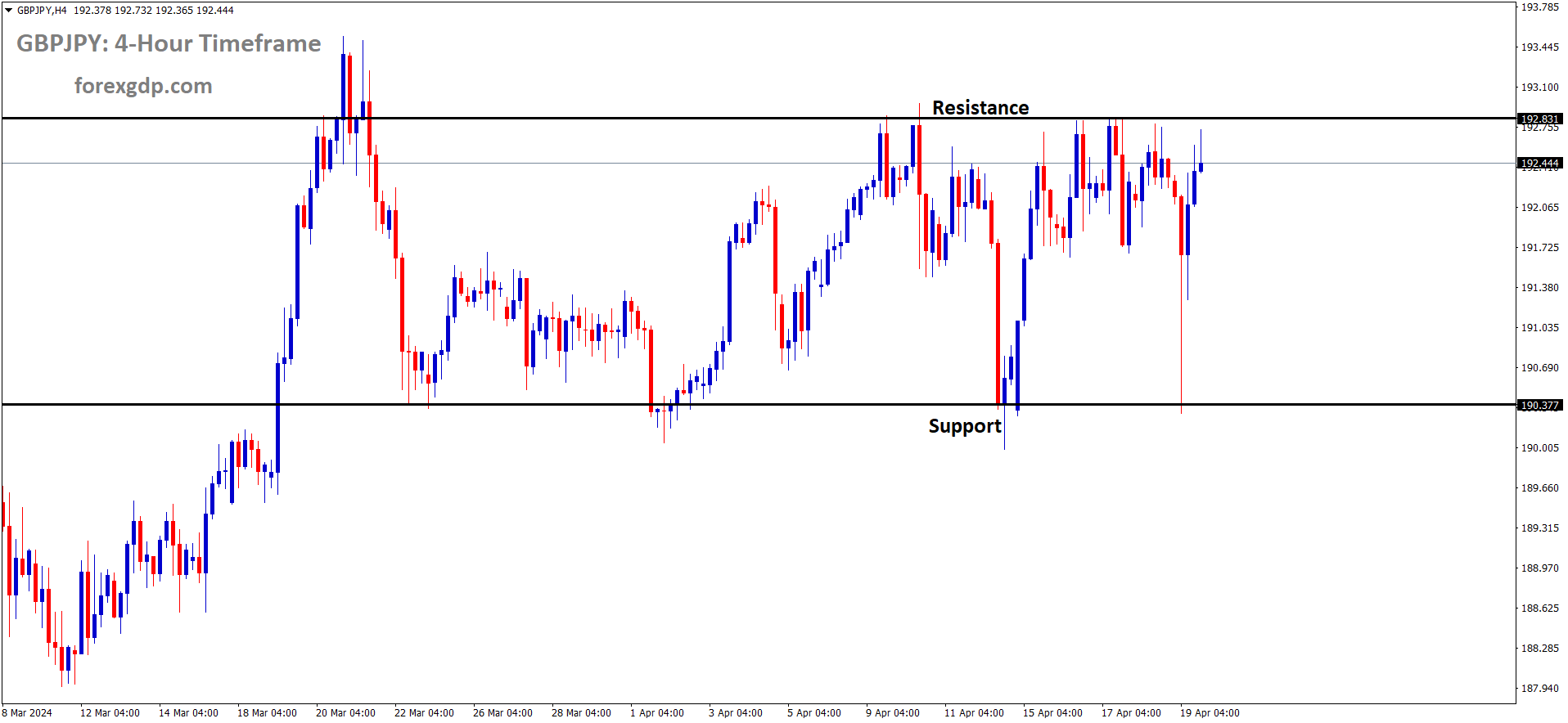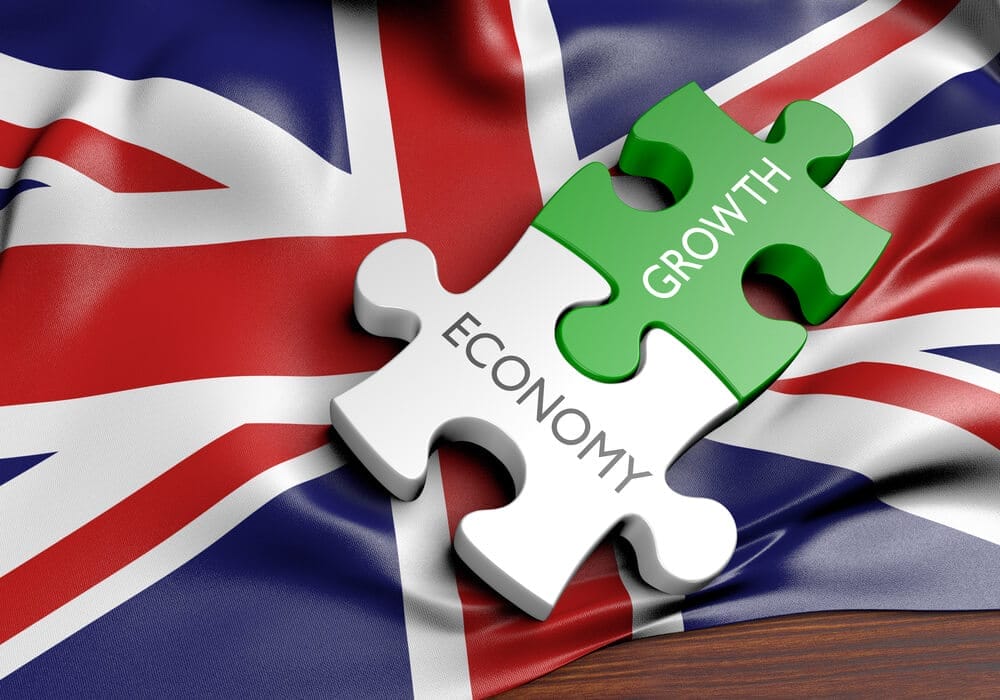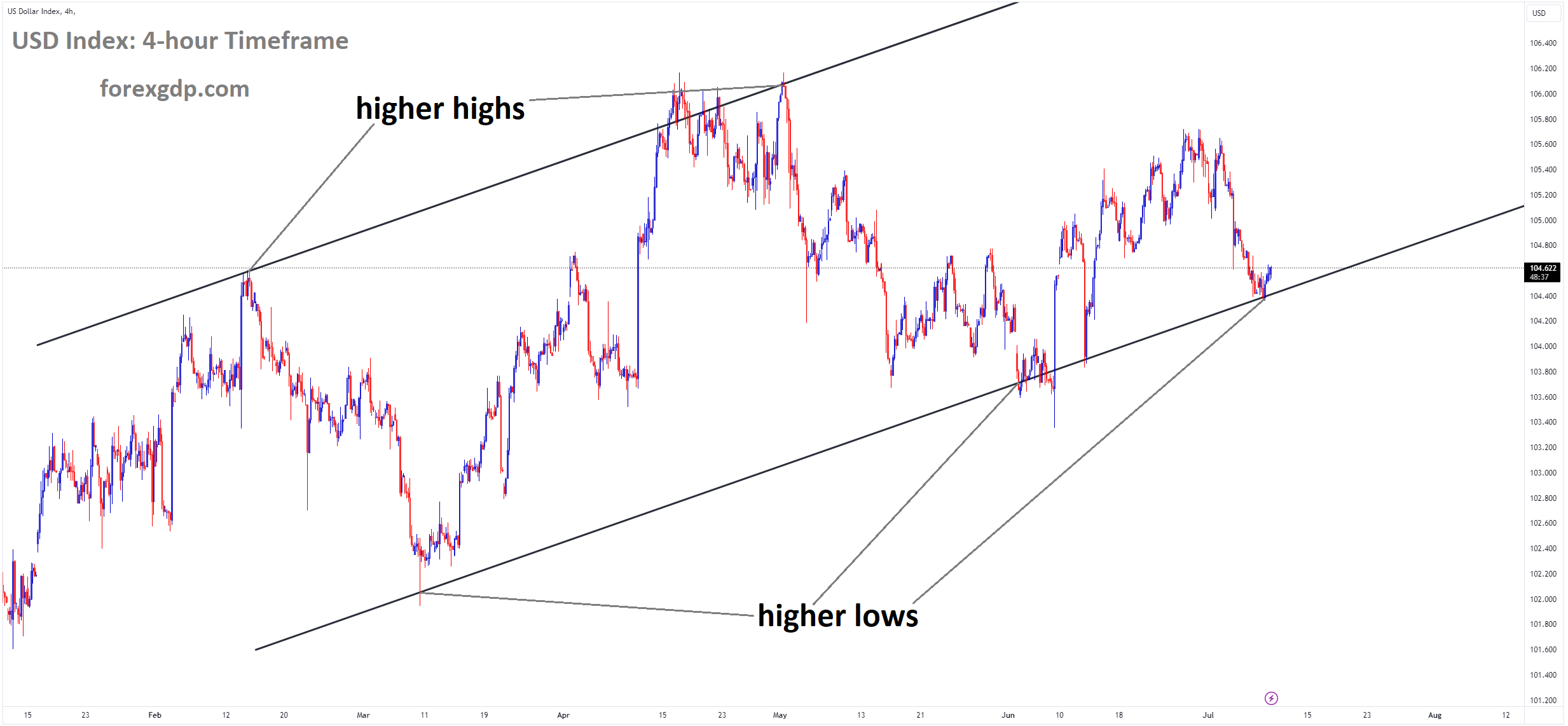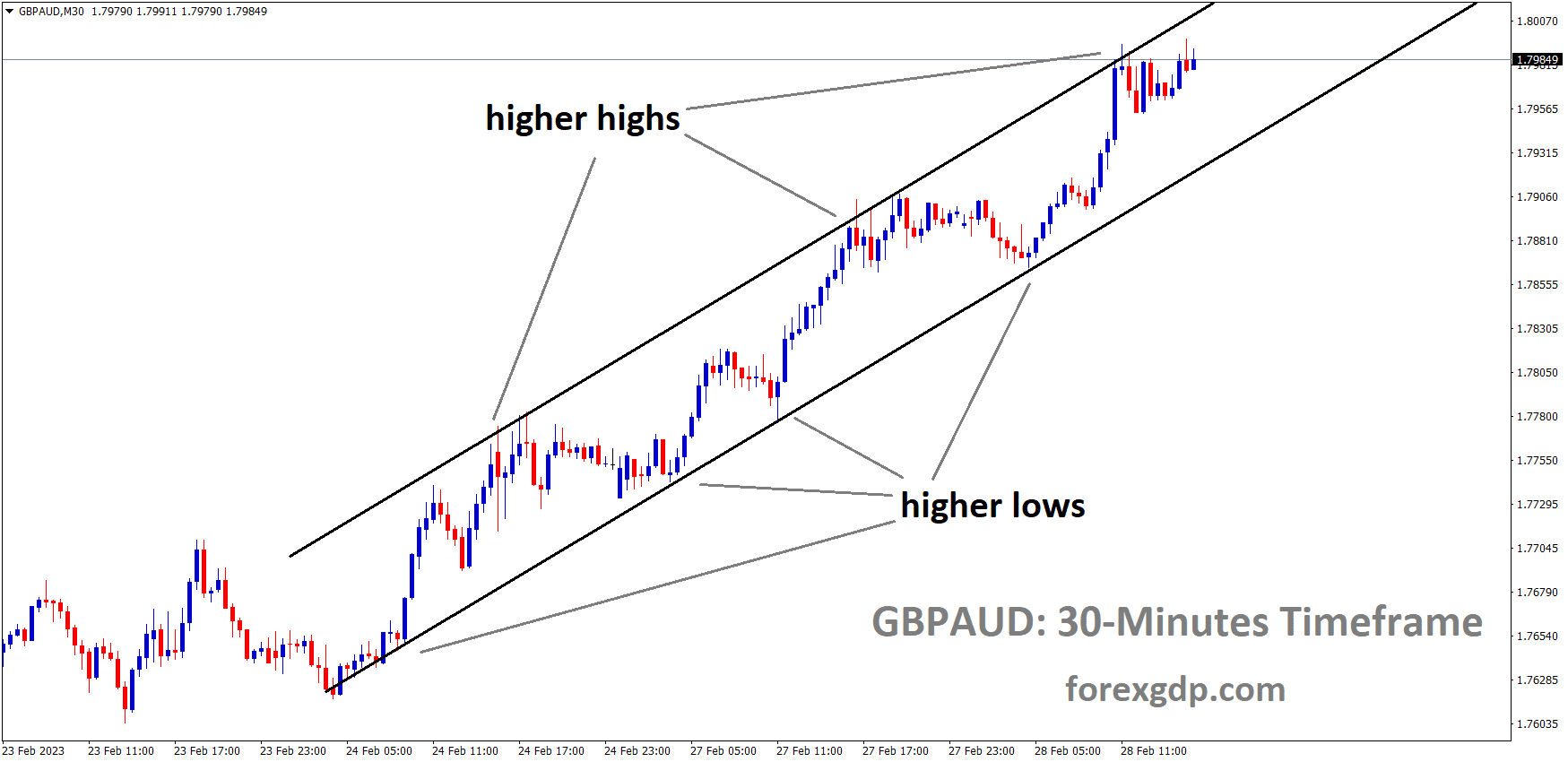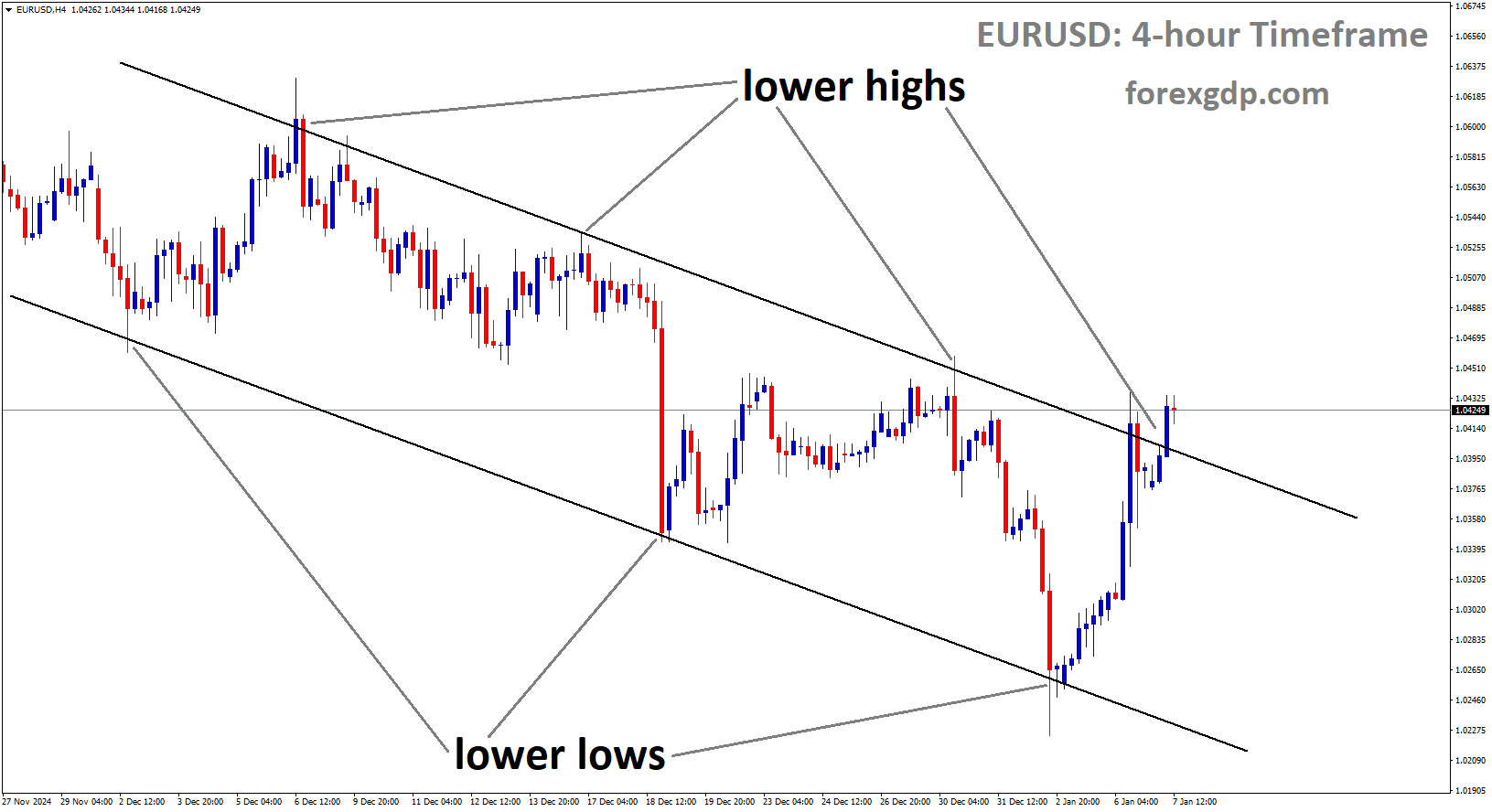GBP: UK Retail Sales: March MoM flat at 0% vs. expected 0.3%
The UK Retail sales came at lower than expected as 0.0% in the March month and 0.10% printed in February month. Core retail sales came at -0.30% in the March month from 0.30% printed in the February month. Annualised readings of Retail sales rose to 0.80% in the March month from -0.30% printed in the February month, Core retail sales increased by 0.40% versus -0.40% previous reading. GBP moved higher after the Retail sales upbeat data in the March month.
GBPUSD is moving in Descending channel and market has rebounded from the lower low area of the channel
According to the Office for National Statistics (ONS), the UK Retail Sales for March remained unchanged at 0% compared to the previous month, falling short of the expected 0.3% increase. In February, there was a slight uptick of 0.1%.
When excluding auto and fuel sales, the Core Retail Sales saw a decline of 0.3% month-on-month in March, contrasting with the 0.3% growth recorded in February.
On an annual basis, Retail Sales in the UK showed a recovery, rising by 0.8% in March compared to a decline of 0.3% in February. Meanwhile, Core Retail Sales increased by 0.4% in March, reversing the previous month’s decline of 0.4%.
GBP: UK retail sales flat in March despite easing inflation, government data reveals.
The UK Retail sales came at lower than expected as 0.0% in the March month and 0.10% printed in February month. Core retail sales came at -0.30% in the March month from 0.30% printed in the February month. Annualised readings of Retail sales rose to 0.80% in the March month from -0.30% printed in the February month, Core retail sales increased by 0.40% versus -0.40% previous reading. GBP moved higher after the Retail sales upbeat data in the March month.
GBPCHF is moving in Descending channel and market has rebounded from the lower low area of the channel
British retail sales remained stagnant in March despite recent easing inflation, marking the first time they did not grow on a monthly basis since December, according to data released by the Office for National Statistics (ONS) on Friday.
Economists surveyed by Reuters had largely anticipated a 0.3% increase in sales volumes for the month. However, the ONS reported that sales volumes showed no growth, following an upwardly revised 0.1% increase in February.
The ONS attributed rises in automotive fuel sales, the highest since May 2022, and non-food store sales, but noted that these were offset by declines in food stores and online and other non-store retailers.
Sales volumes excluding fuel sales saw a decrease of 0.3% on the month.
Lisa Hooker, leader of industry for consumer markets at PwC, remarked, “What is clear is that the first quarter of the year has been disappointing for many retailers. Lower inflation and the first 2 per cent cut to National Insurance, which was felt in January’s pay packets, has yet to translate into a sustained recovery in spending.”
Finance minister Jeremy Hunt, aiming to bolster the chances of the ruling Conservative Party in an election expected this year, introduced a second social security tax cut in April following the initial January cut.
Despite the stagnant retail sales, some leading UK retailers have shown encouraging signs recently. Tesco, the country’s largest supermarket group, and clothing group Next both highlighted an improving consumer outlook and forecast profit growth for 2024. Home improvement retailer Kingfisher warned on profit but stated that its UK operations were performing better than in France.
The publication of the retail figures briefly caused sterling to fall against the U.S. dollar and the euro.
British consumer price inflation in March was the slowest in two and a half years, although it fell by less than expected due to rising motor fuel prices, moderating market expectations about the scale of Bank of England interest rate cuts this year.
The ONS data also revealed that compared to a year ago, sales volumes were 0.8% higher. Additionally, they rose by 1.9% from the previous three months, marking the largest increase since mid-2021, propelled by a surge in sales in January.
GBP: UK retail sales flat despite lower inflation
The UK Retail sales came at lower than expected as 0.0% in the March month and 0.10% printed in February month. Core retail sales came at -0.30% in the March month from 0.30% printed in the February month. Annualised readings of Retail sales rose to 0.80% in the March month from -0.30% printed in the February month, Core retail sales increased by 0.40% versus -0.40% previous reading. GBP moved higher after the Retail sales upbeat data in the March month.
GBPJPY is moving in box pattern and market has reached resistance area of the pattern
The Office for National Statistics reported on Friday that British retail sales remained stagnant in March, despite recent alleviation in high inflation. This marks the first time since December that sales haven’t grown on a monthly basis.
Most economists surveyed by Reuters had anticipated a 0.3% increase in sales volumes for the month. However, according to the ONS, sales volumes showed no growth, following a revised upward movement of 0.1% in February.
The rise in automotive fuel sales, reaching their highest levels since May 2022, along with increased sales in non-food stores, were offset by declines in food stores and online and other non-store retailers.
Excluding fuel sales, sales volumes decreased by 0.3% for the month. Lisa Hooker, leader of industry for consumer markets at PwC, noted that the first quarter of the year had been disappointing for many retailers, despite lower inflation and a 2% cut to National Insurance felt in January pay packets, which had yet to translate into sustained spending recovery.
In April, Finance Minister Jeremy Hunt introduced a second social security tax cut after the initial January cut, aiming to bolster the ruling Conservative Party’s chances in an expected year-end election.
Despite the stagnation, some positive signs have emerged from leading UK retailers. Tesco, the country’s largest supermarket group, and clothing group Next both highlighted an improved consumer outlook and forecast profit growth for 2024. However, home improvement retailer Kingfisher warned of profit concerns, though its UK operations outperformed those in France.
Following the publication of retail figures, the sterling briefly dipped against the U.S. dollar and the euro. British consumer price inflation in March was the slowest in two and a half years, although it fell by less than expected due to rising motor fuel prices. This tempered market expectations regarding the scale of Bank of England interest rate cuts for the year.
The ONS data revealed that sales volumes were 0.8% higher compared to the previous year, and rose by 1.9% from the previous three months, marking the most significant increase since mid-2021, primarily driven by a surge in sales in January.
Don’t trade all the time, trade forex only at the confirmed trade setups
Get more confirmed trade signals at premium or supreme – Click here to get more signals , 2200%, 800% growth in Real Live USD trading account of our users – click here to see , or If you want to get FREE Trial signals, You can Join FREE Signals Now!

